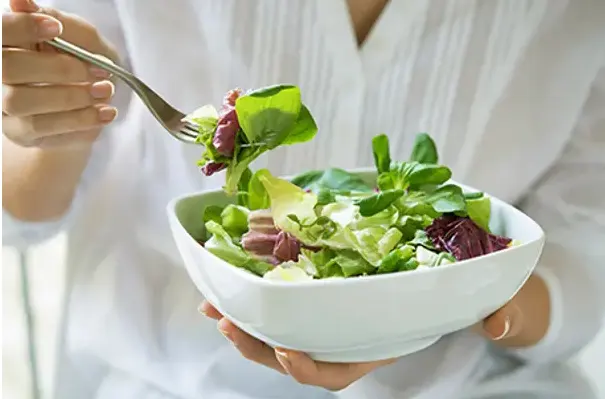That depends on what you add to those greens. The right toppings can create a filling meal that’s loaded with vitamins, minerals, protein, healthy fats, and smart carbs. But other ingredients can pack in extra calories, fat, sodium, and sugar. By making good choices, you can toss together a salad that’s delicious and nutritious. Dressings like ranch, blue cheese, and Thousand Island are often high in calories, unhealthy saturated fat, and sodium. A 2-tablespoon serving of a typical blue cheese dressing tacks on nearly 150 calories and more than 15 grams of fat. And many people drench theirs in a half-cup or more. The result is a salad that can serve up more fat than a cheeseburger with fries.
So, go with a low-calorie, fat-free dressing, right? Think again. To make up for flavor, they’re often loaded with extra sugar and sodium. Fat makes salads tastier and healthier. Your body needs it to take in and use certain vitamins, like A, D, E, and K. One study found that people got fewer antioxidants called carotenoids when they ate salads with fat-free dressing, compared with reduced- or full-fat dressing. Make your own dressing, and you’ll cut back on the unhealthy stuff. Start with olive oil, which has heart-healthy unsaturated fat. Whisk with balsamic or red wine vinegar, or lemon or lime juice. You can also add a little Dijon mustard or honey for flavor, and season with salt and black pepper.
A green salad with chicken may sound like a healthy meal, but descriptions like “crispy” and “crunchy” are red flags. These words are code for breaded and deep-fried, which can turn that healthy-sounding salad into a calorie bomb. What’s worse, research shows that eating a lot of fried foods can raise your chances of heart disease and type 2 diabetes. A salad of veggies alone won’t fill you up for long — you need protein to fend off hunger. Protein takes longer to digest, so you stay satisfied longer. Good sources include chicken breast (26.7 grams in 3 ounces), salmon (21.6 grams in 3 ounces).







